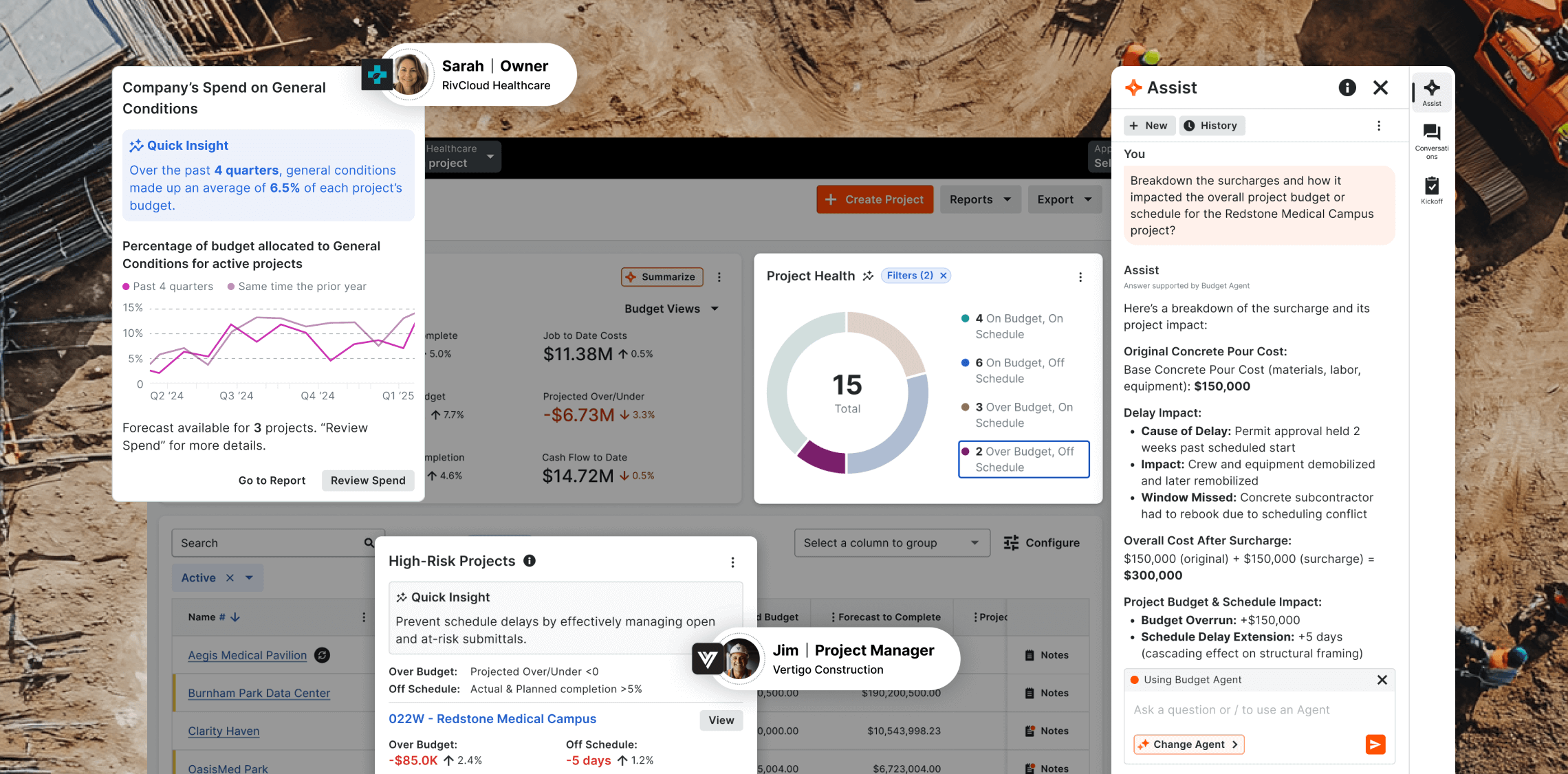The Journey to Procore Adoption
Both panelists brought extensive experience with Procore to the discussion, though their paths to adoption differed significantly.
Nick Tuttle, Assistant Vice President of Design and Construction at UT San Antonio, has been championing Procore for a decade. His team oversees hundreds of projects annually, from new construction to renovations and infrastructure improvements. Most recently, they developed the Center for Innovation, Entrepreneurship, and Career Building, preparing students for careers in artificial intelligence, cybersecurity, data science, and computer science.
Justin James, Executive Vice President and COO of AMLI Residential, represents a different perspective as an owner that self-performs their construction. AMLI, known for developing luxury apartment communities across the United States with a focus on sustainable practices and high-quality construction, invested in Procore partnership around 2014.
Implementation Approaches
Tuttle's introduction to Procore began at his previous company, AGCM, where he helped launch the platform across 70 project managers. When he joined UT San Antonio, he brought that expertise with him, implementing an aggressive three-month transition timeline.
"I basically told my team, we're gonna make this happen. I want to shut off that other application in 3 months and we're just gonna go," Tuttle recalled.
The implementation followed a train-the-trainer model, with team members learning the tools and training modules before cascading knowledge throughout the organization. The response was overwhelmingly positive, with users gravitating toward Procore's intuitive interface and functionality.
While AMLI saw immediate returns on their construction activities through their in-house general contracting operations, James noted that by the end of their first cycle, they recognized Procore's potential value for their operations and owner activities as well.
Engaging External Stakeholders
The discussion revealed how each organization manages relationships with external contractors within the Procore ecosystem. UT San Antonio takes a direct approach, requiring contractors to use their Procore instance as specified in contract documents.
"We tell them that Procore is our project management record," Tuttle explained.
This strategy has proven effective partly due to Procore's widespread adoption in the San Antonio construction market, where most general contractors already have experience with the platform.
The university's approach has evolved over time, starting with core functions like drawings, submittals, and RFIs before expanding to include invoice submissions and other responsibilities previously handled internally, allowing UT San Antonio's team to focus on higher-value activities while maintaining project oversight.
For AMLI, the situation is more complex due to their dual role as an owner with an in-house GC. When working with third-party contractors, they face the challenge of data ownership and integration.
"When we partner with a third party GC to construct our assets, obviously if they're already a Procore shop, that's wonderful, but it's also a challenge too because then they're owning the data and we want that connection back into our system," James noted.
AMLI sometimes creates Procore instances for contractors who aren't already users, adapting their approach based on each contractor's existing software capabilities.
The Promise of Connectability
Both panelists expressed enthusiasm for Procore's connectability feature, which enables two separate Procore instances to share information across a single project.
For UT San Antonio, this addresses a fundamental tension between their requirement for contractors to use the university's instance and contractors' preference to operate within their own systems. Connectability offers the best of both worlds: contractors can work in their familiar environment while maintaining a single source of record in the university's system. As Tuttle noted, this ultimately reduces general condition costs by minimizing labor hours spent on data entry.
Portfolio Management and Cross-Project Visibility
The conversation turned to Procore's expansion beyond construction into portfolio planning and management. Currently, UT San Antonio relies on Procore's Power BI integration for cross-project visibility, analyzing performance metrics for RFIs and submittals alongside financial data across their portfolio of approximately 100 projects. This comprehensive view enables strategic decision-making when project priorities need to shift.
Looking ahead, Tuttle emphasized the value of persona-based views within the platform. Different stakeholders need tailored dashboards, for example inspectors tracking observation and inspection reports, or architects monitoring RFI processing times - each group tracking their own performance metrics.
James described his current morning routine of opening individual browser tabs for each active project to review daily updates and project health. The addition of a centralized portfolio view will provide immense value by consolidating this information.
Beyond immediate project management, he's particularly interested in asset-based project grouping that would connect initial development with ongoing lifecycle activities.
"Most of our communities have a fair amount of retail component to it, and as those tenants change over time, having one place for those projects and another for capex projects would add value throughout the life cycle of our asset," James explained.
Asset Management and the Operations Phase
Procore's evolution from a build-focused platform to encompass planning and operations phases resonated strongly with both panelists. UT San Antonio is working to integrate operations and maintenance staff throughout the entire project lifecycle, from plan review through design team collaboration during submittals.
Given that their buildings are designed for 50-75 year lifespans, the ability to efficiently transfer asset data to CMMS platforms is crucial. Currently, this process involves manual data entry by dedicated staff reviewing closeout documents. An upcoming merger with UT Health, involving two different CMMS systems, makes standardized data export capabilities even more valuable.
For AMLI, asset data continuity provides many operational benefits. Field teams already benefit from having drawings, RFIs, and other construction information readily accessible on mobile devices. Extending this accessibility to building directors and service managers enables faster, more informed decision-making throughout the asset's operational life.
Breaking Down Silos Through Integration
Both organizations have realized significant value by breaking down traditional silos between construction and operations teams. James emphasized the importance of bringing technical experts from their operations team into design and construction phases.
"Having the ability to bring in technical experts on our operations team to be a part of our design, to be a part of our execution and the construction of it, and then part of that closeout and having them have a seat at the table through Procore, it just adds value along the way," he explained.
This integration creates buy-in and ensures operational considerations are addressed during construction rather than discovered afterwards.
Tuttle echoed this sentiment, noting that integration extends beyond operations and maintenance to include building officials and fire marshals. Having all stakeholders on a single platform eliminates the common complaint of "nobody asked me" and ensures comprehensive input throughout project development. The unlimited user model supports this approach by allowing temporary access for specific tasks, such as bringing in a fire marshal for a single review.
The Future of AI in Construction Management
The discussion concluded with an exploration of artificial intelligence applications, particularly Procore's development of Helix chat and agent tools. The RFI agent example—which guides users through proper question construction, document referencing, and duplicate detection—sparked ideas about broader AI applications.
Risk Management Applications
Tuttle focused on risk management applications, envisioning AI tools that could analyze financial models, track contingency usage, and assess burn rates. He described the common scenario of project managers bringing issues to his attention without clear understanding of schedule or cost impacts.
"I can't tell you how many times a project manager walks into my office, and he's like, hey, we've got this issue going on, whatever that is, and I ask him what's the schedule impact and what's the cost impact, and they always look like deer in headlights," he said.
AI agents will help address these fundamental questions more systematically.
Compliance and Communication Bridge
James saw immediate potential in compliance applications, with AI agents monitoring contractual obligations and ensuring teams complete required submittals and closeout processes.
Looking further ahead, he's excited about AI's potential to bridge the communication gap between construction's technical language and operational requirements. AI agents could help operations staff quickly find relevant information from complex construction data, making that information more accessible to teams unfamiliar with technical documentation.
Conclusion
The panel discussion illustrated how forward-thinking owners are leveraging technology platforms like Procore to transform traditional approaches to capital asset management. Both UT San Antonio and AMLI Residential have moved beyond viewing construction management software as a project-specific tool, instead embracing platforms that support the entire asset lifecycle from planning through operations.
Key Takeaways
Their experiences demonstrate that successful transformation requires more than technology implementation. Such transformation demands:
Organizational change management
Stakeholder integration
A long-term view of asset value
As the industry continues evolving toward more integrated, data-driven approaches, their insights provide a roadmap for other owners seeking to maximize efficiency across their capital asset portfolios.
The conversation reinforced that the future of construction and asset management lies not just in better tools, but in better integration of people, processes, and technology throughout the entire asset lifecycle. For organizations ready to embrace this transformation, the potential benefits extend far beyond individual project success to encompass portfolio-wide optimization and long-term operational excellence.




